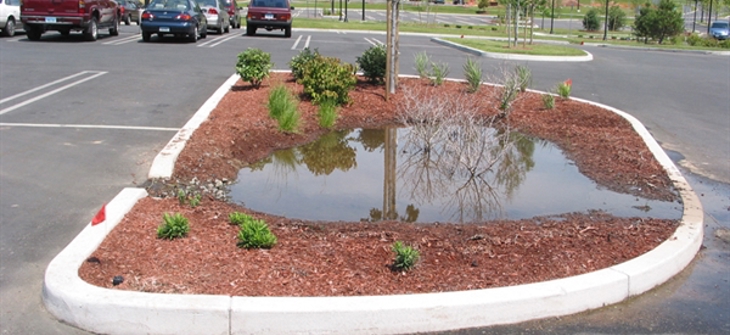
Rain Gardens Not Permitted?
Rain Gardens and Permitting: Common Reasons for Non-Compliance
Current stormwater design guidance typically recommends starting with preservation of the natural landscape and hydrology wherever feasible. But, even with preservation, new stormwater management facilities are likely to be required to capture and clean runoff from pollution generating surfaces. These new stormwater facilities are likely to include imported soil or soil amendments that add permeability and/or optimize soil structure for vegetative growth. For many years, the industry has characterized media in vegetated facilities generically as soil, sand, compost, etc.
New research suggests that the physical and chemical composition of soil, sand, and compost requires further investigation prior to use in a water quality treatment facilities that discharges runoff. For example, enriched soil, unstable compost, and river sand can release nutrients, metals, or other contaminants that can make downstream water quality issues worse. To minimize such issues, careful characterization of all system components and site suitability are needed. In the state of Washington, where pioneering bioretention media research is ongoing, the Department of Ecology (WADOE) requires that biofiltration or bioretention facility soil meet specific criteria for particle size distribution, cation exchange capacity, and organic content. In addition, the sizing approach for these systems requires continuous simulation modeling to ensure that they treat at least 91% of rainfall annually. Specific design requirements regarding minimum setbacks, groundwater depth, seepage, infiltration rate, drawdown, and bypass flow routing also apply.
Clearly, biofiltration and bioretention design requires far more precision than rain garden design. In Washington, a rain garden is also not considered a permitted facility associated with the National Pollution Discharge Elimination Systems (NPDES) permit. A rain garden is simply landscaping. In Washington, a line has been drawn between a rain garden, which provides no treatment credit and an engineered facility meeting WADOE guidelines that receive credit for improving water quality.
We’ve entered a new era in the design of vegetated facilities. With increasing accountability for effluent water quality, we clearly need to put the specificity in our soil specifications and move beyond simply calling out topsoil, compost, and sand as major components. Physical and chemical analysis are also needed for all media to make sure that the source material is free from contamination and will not leach soluble pollutants. Suppliers have traditionally been required to use vague physical descriptions and Material Safety Data Sheets (MSDS) to ensure the quality of materials. To make sure media is suitable for water quality protection, additional physical and chemical analysis should be included in media specifications. Only thoroughly evaluated media should be integrated into an NPDES permitted facility.
